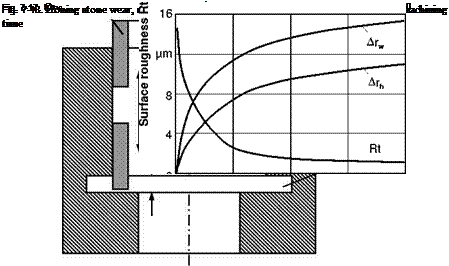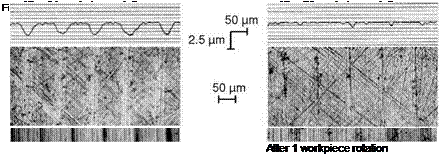The work result, especially workpiece roughness, is dependent in particular on the machining time. The roughness, resulting from pre-machining has to be improved by the honing process and leads to a typical temporal course (Fig. 7-18).
Initially the peaks of roughness are removed quickly. After a relatively short machining time, the surface roughness asymptotically approaches a final value determined primarily by the tool and the process kinematics (Fig. 7-19). At the beginning, the tool does not bear flat on the surface, but only on individual peaks of surface roughness. The local contact pressure is thus extremely high at the contact points. The material removal rate is also correspondingly high. This leads to a fast
 |
reduction of roughness. Given an increasing material removal, the contact surface rises, upon which the local contact pressure of the individual grits decrease continuously.
The honing stone wear exhibits a curve similar to that of the material removal rate. At the beginning, the pre-machined surface has a large abrasive influence. High local honing pressures at the peaks of roughness lead to an increased grain breakaway in the honing stone. Given a continual smoothing of the surface and an
 |
even distribution of pressure, the wear is decreased, and almost linearly correlates to the progressing machining time (Fig. 7-18).
